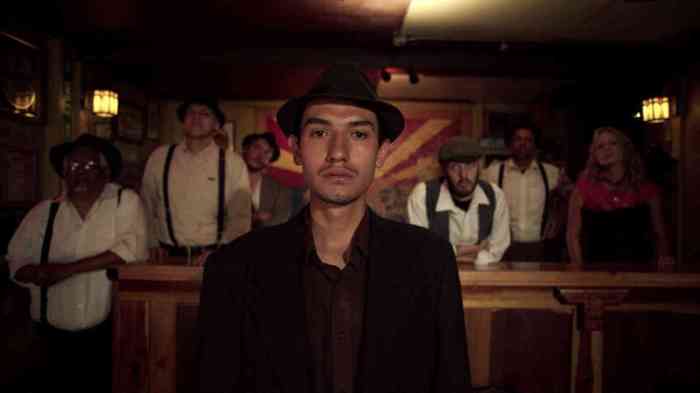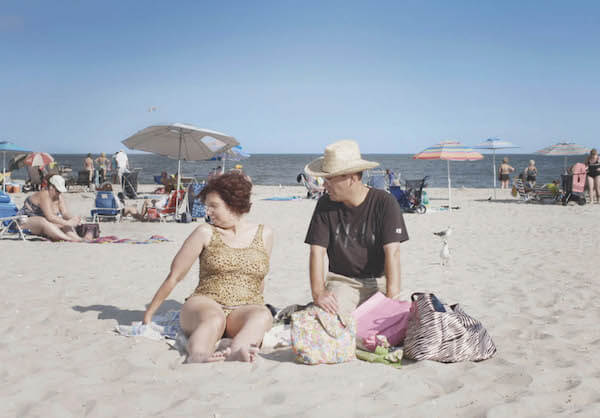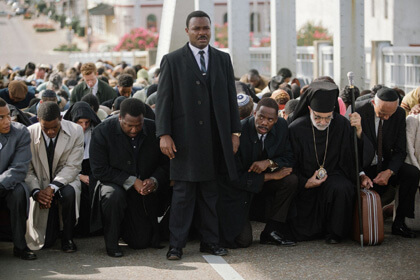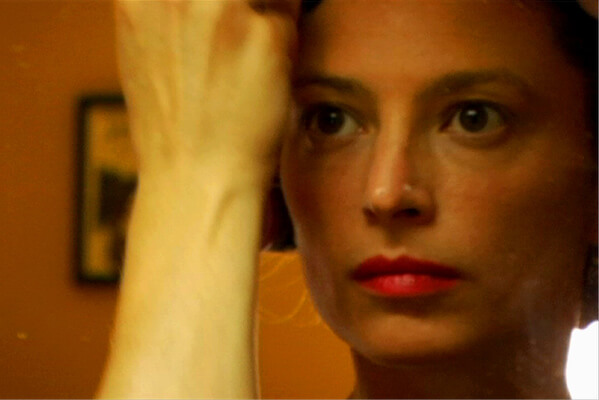Nuria Ibañez’s “The Naked Room” consists almost entirely of huge close-ups of young faces. | MAGIC LANTERN
Critic/ filmmaker Robert Greene recently attacked reviewers for their blindness to subtleties of form — particularly in the way faces were filmed — in the recent Afghanistan War documentary “The Kill List.” It would be difficult to ignore the choices Mexican director Nuria Ibañez has made in framing her subjects — for the most part, teenage psychiatric patients — in “The Naked Room,” a documentary shot in a therapist’s office inside a hospital.
The film consists almost entirely of huge close-ups of faces. Doctors and parents are present, but largely left off-screen. That’s the most obvious decision Ibañez made, and it speaks to a desire to trust youth. That said, some of her images contradict reports about her subjects’ behavior. One young boy looks particularly angelic and innocent, but according to his father, he left bags of his shit in the family refrigerator.
“Among the devices used in nonfiction, nothing is more transparently staged than the interview, with its artificial mood lighting and unnatural atmosphere,” Greene wrote. “I simply don’t believe that in a post-’Jersey Shore’ confession booth world people watch interviews without thinking about manipulation — either in front of or behind the camera.”
Down to camera shot framing, Nuria Ibañez gives patients their say
Watching “The Naked Room” with his words alone in mind would be hopelessly cynical. For one thing, Ibañez didn’t interview anyone herself — she filmed interviews conducted by medical professionals — yet one can’t help feeling that there’s a touch of adolescent self-dramatization to some of its subjects. They often break down in tears while telling their stories.
Unlike cinema vérité pioneer Frederick Wiseman, Ibañez doesn’t hide the presence of her camera. Her framing calls attention to it. However, for all his Wiseman’s stated “neutrality,” some of the most memorable scenes in his films — such as a young man’s bad mescaline trip in “Hospital” and an extended racist rant in “Welfare” — seem to be played up to the camera. The camera definitely alters the situations in “The Naked Room”; one can tell how its subjects react to it by seeing if they look into it or stare at the floor instead.
Self-harm is the most common manifestation of the young patients’ mental illness shown here. Despite a few horror stories, including a kidnap victim who was told by her father that Satanic possession was responsible for criminals choosing her, these kids’ parents seem relatively supportive. The mother of Victor, a bisexual teenager who cuts himself, emphasizes that she doesn’t care about his sexual orientation and still loves him.
It would be easy to mistake “The Naked Room” for an artless document of medical intake. But if Ibañez’s direction is relatively unadorned, the film’s editing is obviously carefully thought-out. “The Naked Room” is parceled out into minute-long chunks, each focusing on an individual kid. The film was obviously made up of very lengthy takes, which were edited down into much smaller scenes. It goes back to spend more time with some of its subjects, including Victor.
Ibañez is rarely critical of her subjects’ parents, and she seems wholly on the side of the psychiatrists. At the same time, her directorial choices suggest a total sympathy with the youth — about two-thirds of whom are female — one not often granted by a hostile and sexist world. In the film’s opening scene, a teenage girl says that her self-esteem has plummeted with the onset of adolescence, as she feels that she’s no longer pretty or thin and that her breasts are too big. Such feelings, of course, are completely subjective, but the ugliness and weight gain she perceives seem utterly imaginary to me. Ibañez holds the camera above her breasts, as if to say that some things should be outside the spectator’s judgment.
The fragmentation of “The Naked Room” is its weakest aspect. I would have preferred not to constantly shift attention from one subject to another. That said, by narrative standards, its takes are remarkably long. At only 67 minutes, one feels like we’ve barely gotten introduced to the world of the hospital, but a longer film would’ve risked becoming unwatchably harrowing. At its best, “The Naked Room” gives a voice to some of society’s most troubled and marginalized people, in a style that clearly reflects a great deal of thought about the moral implications of form.
THE NAKED ROOM | Directed by Nuria Ibañez | In Spanish with English subtitles | Magic Lantern | Opens Aug. 29 | Anthology Film Archives, 32 Second Ave. at Second St. | anthologyfilmarchives.org









